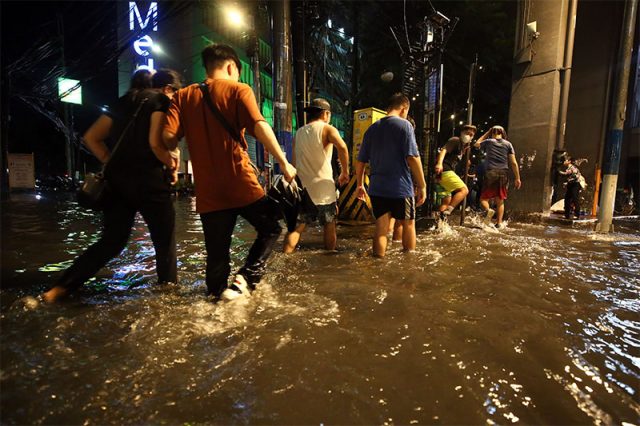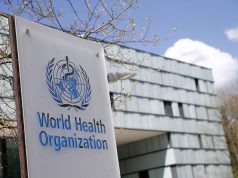
Amid the rainy season, the World Health Organization (WHO) reminded the public to be cautious when dealing with floods.
The Philippine Atmospheric, Geophysical and Astronomical Services Administration (PAGASA) declared the onset of the rainy season in the country last June 2.
Since then, the country has experienced constant rain showers and thunderstorms.
This week, heavy downpours of rain caused flash flooding and caused traffic congestion in various parts of Metro Manila.
Early Friday, the low pressure area spotted in east of Baler, Aurora has developed into a tropical depression and is now known as “Dodong.”
As of 5 p.m., PAGASA said Dodong was estimated to be over the coastal waters of Laoag, Ilocos Norte, packing winds of 45 kilometers per hour near the center and gustiness of up to 75 kph.
The state weather bureau advised the public of projected accumulated rainfall of 50-100 millimeters from Friday to Saturday afternoon in the following areas:
- Cagayan
- Apayao
- Kalinga
- Abra
- Benguet
- Ilocos Norte
- La Union
- Pangasinan
Amid the inclement weather, here are some tips on how to avoid flood accidents, according to the WHO.
Dealing with #flood at the moment?
🔵 Be careful with electric equipment near stagnant water. Submerged car batteries still have an electric charge.
🔵 You can lose control of your vehicle in as little as 15cm of water. pic.twitter.com/KLnwwxoYnw— World Health Organization (WHO) (@WHO) July 13, 2023
It advised the public to be careful with electric equipment near stagnant water and submerged car batteries, as well as when driving in the rain. It cited that vehicles can lose control in as little as 15 centimeters of water.
The WHO said floods are the most common sort of natural catastrophe. It occurs when an excess of water submerges normally dry ground.
Flood is caused by heavy rainfall or a storm surge from a tropical cyclone or tsunami in coastal locations. —Intern, Bless Aubrey Ogerio









